Watercolor painting is a delicate art form that demands precision and patience.
One of the common challenges artists face is the warping of watercolor paper, which can disrupt the intended flow of colors and distort the final result.
Preventing this issue requires a combination of proper paper selection, strategic techniques, and careful handling.
This guide aims to provide a comprehensive step-by-step approach to keeping watercolor paper flat and free from warping.
From choosing the right paper weight to mastering controlled water application, each step is designed to empower artists with the knowledge and skills needed to create stunning, distortion-free watercolor masterpieces.
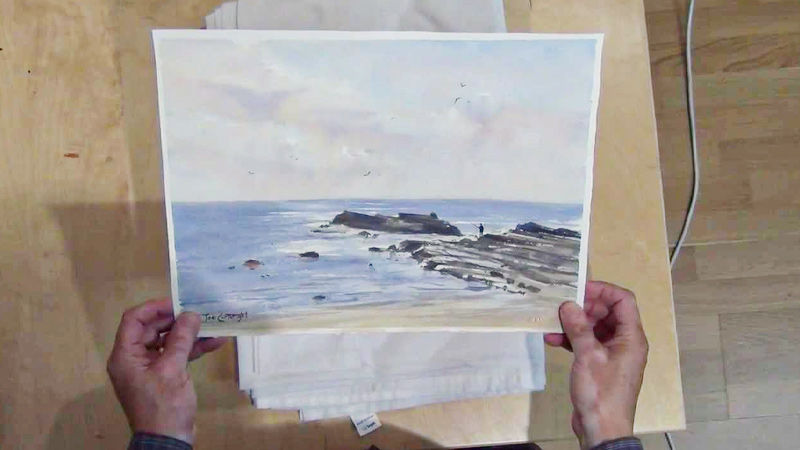
What is Watercolor Paper?
Watercolor paper is a specialized type of paper designed for use with watercolor paints. Unlike regular paper, it is crafted to withstand the unique demands of water-based painting techniques.
Typically made from cotton, wood pulp, or a blend of both, watercolor paper possesses specific characteristics that make it ideal for the medium.
It is available in various weights, with heavier papers being more resistant to warping when saturated with water.
The surface of watercolor paper can vary, ranging from rough to hot-pressed, offering artists different textures to work with.
This paper’s ability to absorb and hold water allows for controlled blending and layering of colors.
Its durability and ability to maintain its structure even when wet make it an essential tool for watercolor artists seeking to create vibrant and expressive artworks.
How to Keep Watercolor Paper From Warping?
Preventing watercolor paper from warping is crucial to achieve a successful watercolor painting.
Here’s a step-by-step process to help you keep your watercolor paper flat and free from warping:
Materials You’ll Need:
- Watercolor paper
- Watercolor paints
- Paintbrushes
- Water container
- Painter’s tape or masking tape
- Drawing board or a flat surface
- Bulldog clips or masking tape
Step 1: Choose the Right Watercolor Paper

Selecting the appropriate watercolor paper is paramount to preventing warping. Opt for papers labeled specifically as “watercolor paper.”
Look for heavier weights, typically around 140lb (300gsm) or higher, as they are less prone to warping.
Additionally, consider the texture of the paper – cold-pressed papers are popular for their versatility.
Step 2: Pre-Stretching Watercolor Paper
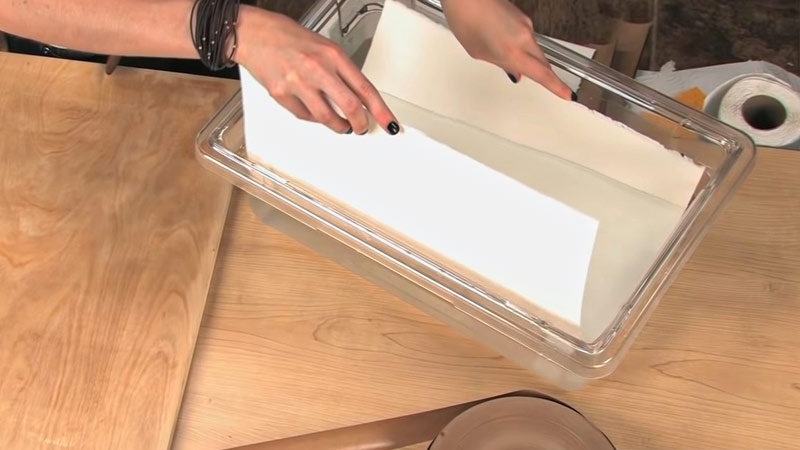
If you find that stretching the paper before painting isn’t sufficient, consider pre-stretching it by soaking it in water and letting it air dry completely before starting your artwork.
This process can provide extra stability, especially for lighter-weight papers.
Step 3: Stretch the Paper
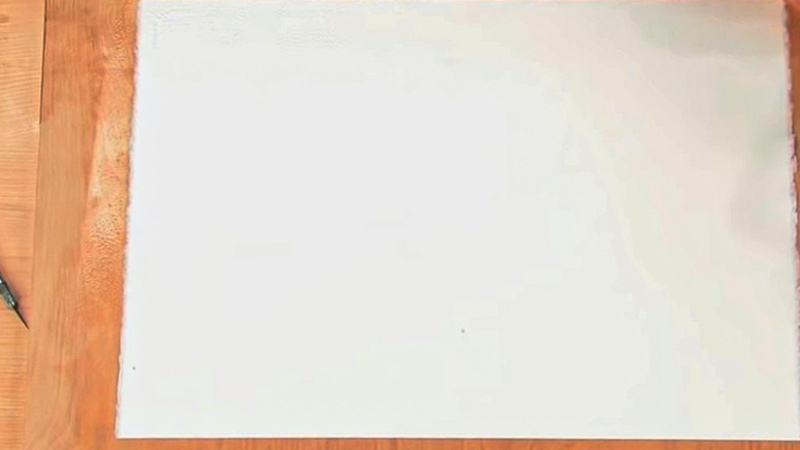
Stretching watercolor paper can be especially helpful for lighter-weight papers. After soaking the paper, lay it flat on a clean surface and secure it with tape.
Make sure to pull the paper taut to eliminate any wrinkles. Allow it to air dry or use a hairdryer on a low, cool setting to expedite the process.
Step 4: Use Proper Water Control
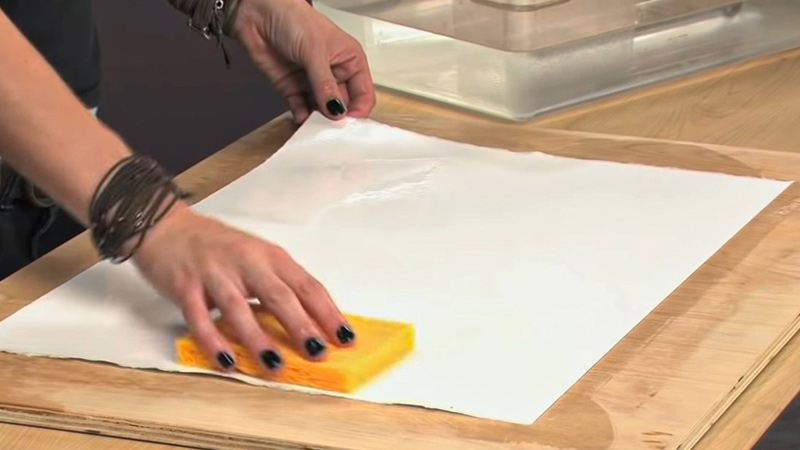
Maintaining control over the amount of water you use is vital. Too much water can oversaturate the paper and lead to warping.
Consider using a palette with wells for controlling the water-to-paint ratio. Before applying paint to the paper, blot excess moisture from your brush onto a paper towel.
Step 5: Try Block-Bound Watercolor Pads
Block-bound watercolor pads have sheets that are glued on all four sides, preventing them from warping during painting.
Once your painting is complete, you can use a palette knife or flat tool to gently release the sheet from the pad.
This method can be especially effective in keeping the paper flat throughout your painting process.
Step 6: Work on an Even Surface
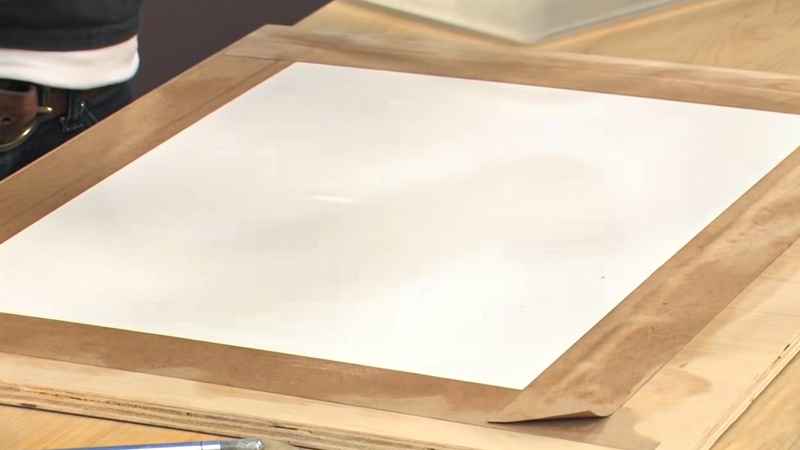
A level, flat surface is crucial to prevent the paper from shifting or buckling. If you’re using a drawing board, ensure it’s stable and secure.
Easels designed for watercolor painting typically have adjustable angles and can be a valuable tool in keeping your paper in place.
Step 7: Layer Paints Gradually
Applying watercolor in thin layers allows each coat to dry thoroughly, reducing the stress on the paper.
Start with lighter washes and build up to darker tones. Let each layer dry completely before adding the next. This patient approach not only enhances your painting but also minimizes the risk of warping.
Step 8: Dry the Painting Properly
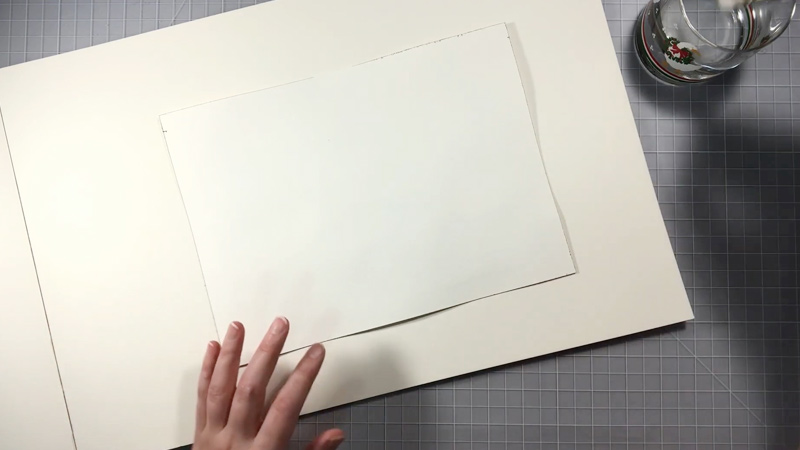
Proper drying is essential to maintaining a flat surface. Allow your painting to air dry on a flat, clean surface.
If you’re in a hurry, use a hairdryer on a low, cool setting, holding it a safe distance from the paper. Be cautious not to use high heat, as this can cause the paper to warp.
Step 9: Store Your Painting Flat
To ensure your finished piece remains flat over time, store it appropriately.
Place it between sheets of clean, acid-free paper or within a portfolio designed for artwork. This protects your painting from dust, moisture, and potential damage.
Step 10: Consider Weighting the Painting
If you notice any residual warping after drying, there’s an additional step you can take.
Place your painting between two clean, heavy books, or use bulldog clips to add gentle pressure. Leave it in this state for a day or two, allowing the paper to gradually flatten.
Step 11: Use Masking Fluid Strategically
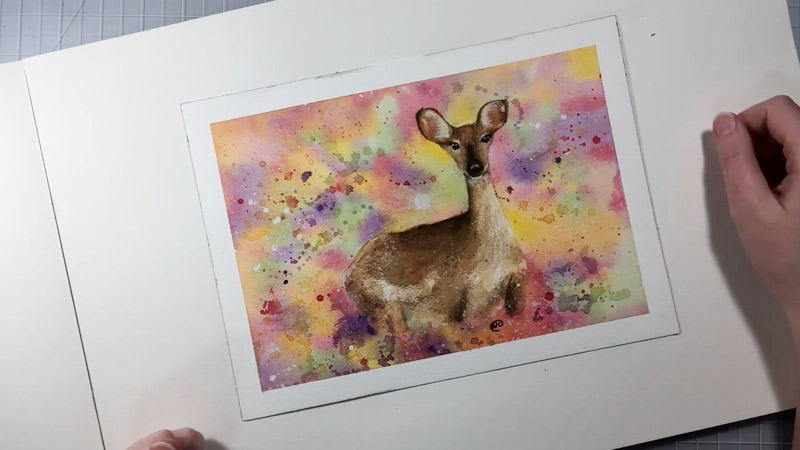
Consider employing masking fluid to preserve areas of white or light color. Apply it sparingly with a clean brush or a fine-tipped applicator.
Once your painting is complete and the masking fluid is dry, carefully remove it with a clean eraser or your fingertips. This technique helps maintain the paper’s integrity in intricate or detailed areas.
What Is the Reason for Warping Watercolor Paper?
Watercolor paper warps primarily due to the absorption of moisture, which causes the paper fibers to expand unevenly.
Here are the key reasons for watercolor paper warping:
Moisture Absorption
Watercolor paper is designed to absorb water and paint to some extent, but excessive moisture can lead to warping.
When you apply watercolor paint or even just water for wet-on-wet techniques, the paper absorbs the liquid, causing it to swell unevenly.
Uneven Moisture Distribution
If you apply water or paint unevenly on the paper surface, such as using more water in one area than another, it can lead to uneven swelling and warping as some areas absorb more moisture than others.
Paper Quality
The quality and weight of watercolor paper play a significant role in its resistance to warping.
Heavier and higher-quality papers are less prone to warping because they are designed to handle more moisture without deformation.
Stretching
Watercolor paper can be stretched before painting to minimize warping. If it’s not stretched or stretched improperly, the paper may warp as it dries after painting.
Drying Conditions
How the paper is dried after painting can impact warping. If it dries unevenly or too quickly, it can cause the paper to warp. Using a hairdryer on high heat, for example, can exacerbate this issue.
Painting Techniques
Certain watercolor techniques, such as heavy washes or the use of a lot of water, can increase the likelihood of paper warping.
Environmental Factors
Humidity levels in your workspace can affect paper warping. High humidity can slow down drying times and exacerbate warping issues.
What Types of Watercolor Paper Is Less Likely to Warp?
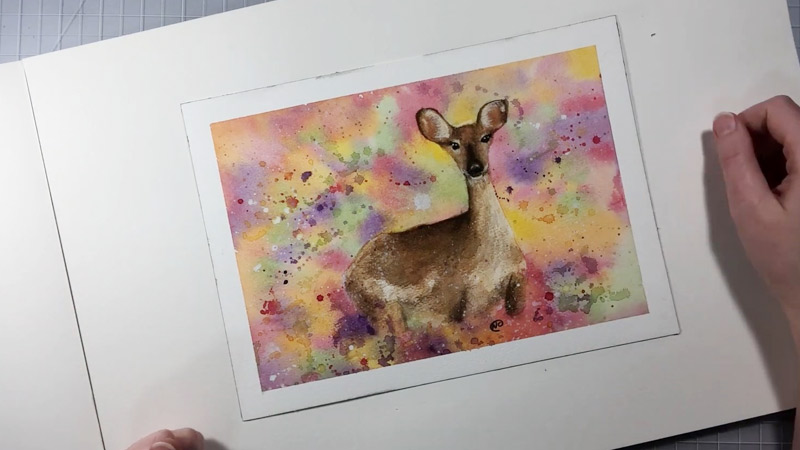
Watercolor paper that is less likely to warp is typically heavier in weight and has certain characteristics that make it more resilient to moisture.
Here are some types of watercolor paper less prone to warping:
Heavyweight Paper
Watercolor paper comes in various weights, typically measured in pounds per ream (lb) or grams per square meter (gsm).
Heavier-weight papers, usually around 140lb (300) or higher, are less likely to warp because they can absorb and handle more moisture without deforming.
100% Cotton Paper
Watercolor paper made entirely from cotton fibers is known for its durability and resistance to warping.
It has excellent wet strength and can withstand multiple layers of paint and water without buckling.
Hot-Pressed Paper
While both cold-pressed (CP) and hot-pressed (HP) watercolor papers are commonly used, CP paper, with its slight texture, often provides more resistance to warping compared to smooth HP paper.
The texture allows the paper to absorb water and paint more evenly.
Professional-Grade Paper
Watercolor papers labeled as “professional” or “artist grade” are typically of higher quality and are less likely to warp compared to student-grade papers.
They are designed for artists who require exceptional performance.
Block-Bound Paper
Watercolor paper blocks are pads of paper where the sheets are glued on all four sides.
Painting on a block-bound pad helps to minimize warping because the paper remains securely bound throughout the painting process.
Once the painting is complete, you can detach the sheet from the block.
How Do You Store and Care For Your Watercolor Paper?
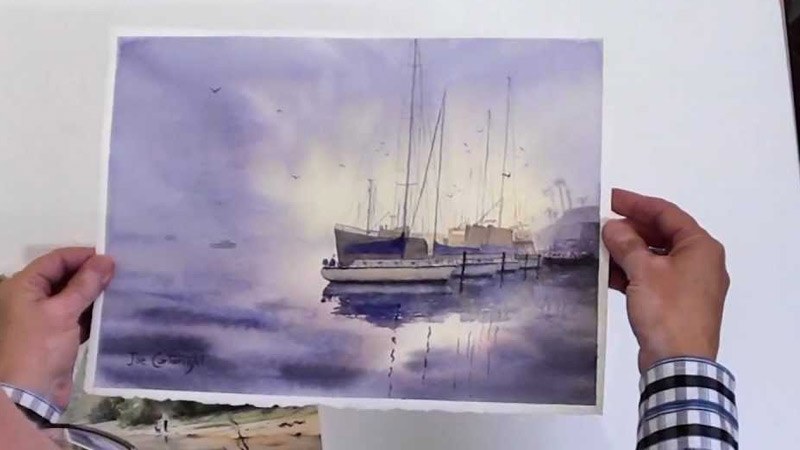
Storing and caring for your watercolor paper properly is essential to maintain its quality and prevent damage over time.
Here’s how to do it:
Store Paper in a Dry
Choose a storage location with stable temperature and humidity levels. Ideally, the humidity should be between 40% and 50% to prevent paper from absorbing or losing moisture.
Consider using airtight containers or storage drawers to protect your paper from environmental fluctuations.
Use Acid-Free Materials
Acid-free storage materials are essential for long-term paper preservation. Acid can cause paper to yellow and become brittle over time.
Acid-free storage boxes or portfolios are readily available and designed to protect your paper from acid exposure.
Keep Paper Flat
Whenever possible, store your paper flat to prevent warping. If your paper is too large to lay flat, store it in a large portfolio or between acid-free foam boards to maintain its flatness.
Use Interleaving Sheets
Interleaving sheets should be acid-free and made from archival-quality paper. They act as a protective barrier between sheets to prevent them from sticking together or transferring pigment.
If you’re storing artwork in wet or damp areas, consider using glassine paper or silicone release paper as interleaving sheets to protect the artwork.
Protect Against Dust
Cover your stored paper with a clean, dust-free sheet, or use acid-free tissue paper or glassine to create protective layers.
If you’re storing your paper in open shelving or racks, consider using plastic sleeves or covers to shield it from dust.
Label and Organize
Use labels or tags on your storage containers to identify paper types, sizes, and other relevant information. This makes it easier to locate specific sheets when you need them.
Organize your paper by type, size, or even by project to streamline your access.
Avoid Excessive Handling
Handle your watercolor paper with clean, lint-free gloves to prevent oils and dirt from your skin from transferring onto the paper.
When removing paper from storage, handle it gently and avoid unnecessary bending or folding.
FAQs
Why does watercolor paper warp?
Watercolor paper warps due to uneven absorption of moisture. When water is applied, the paper fibers swell unevenly, causing it to bend or buckle.
What’s the difference between hot-pressed and cold-pressed watercolor paper in terms of warping?
Cold-pressed watercolor paper has a textured surface that can be more forgiving when it comes to warping, while hot-pressed paper has a smoother surface and may be more prone to warping.
Is stretching watercolor paper necessary to prevent warping?
Stretching watercolor paper is optional, but it can help minimize warping, especially for lighter-weight papers. It involves saturating the paper with water and then securing it flat to a surface until it dries.
Can using too much water while painting causes warping?
Yes, excessive water application can lead to warping. It’s important to control the amount of water you use and to blot your brush on a paper towel to remove excess moisture.
How can I flatten watercolor paper after it has warped?
If your painting warps after drying, you can try placing it between clean, heavy books or using bulldog clips to gently weigh it down. Leave it like this for a day or two to help flatten the paper.
To Recap
In the realm of watercolor painting, mastering the art of preventing paper warping is a crucial skill.
With the right techniques and thoughtful handling, artists can preserve the integrity of their creations.
From selecting quality watercolor paper to employing strategic methods like stretching and controlled water application, each step contributes to a flawless outcome.
Remember, practice and familiarity with your chosen paper will refine your approach over time.
By following these steps diligently, artists can confidently embark on their watercolor journeys, knowing that their canvases will remain flat, allowing colors to flow seamlessly and resulting in breathtaking, warp-free artworks that captivate the eye and inspire the soul.
Leave a Reply